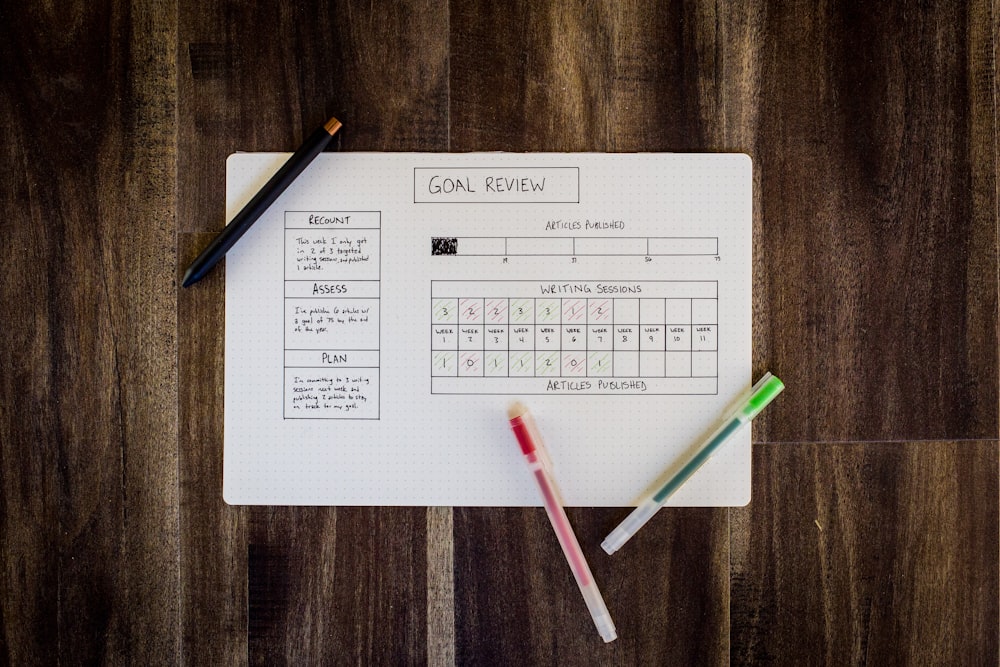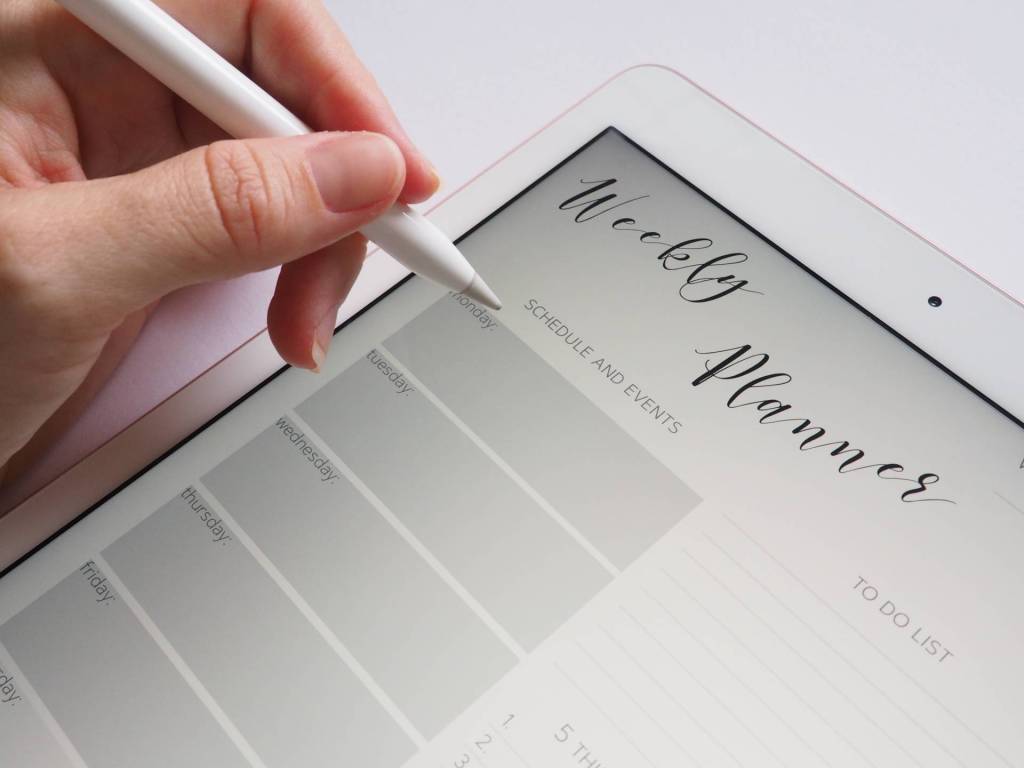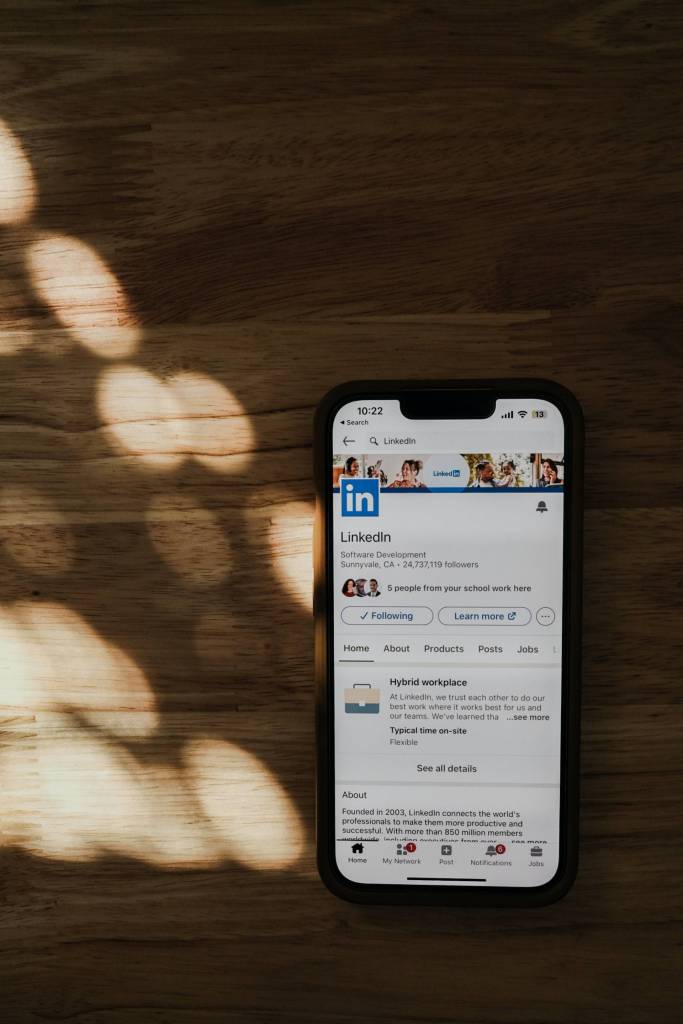Creating a leadership personal development plan is a pivotal step in anyone’s career journey—especially for those of us striving to climb the leadership ladder. From my experience, it’s more than creating a to-do list; it’s about sculpting your future in leadership. This strategic tool is not only essential for aligning personal career goals with actionable steps but also serves as a bridge between current skills and the competences needed for future roles. Whether you’re crafting this plan with an employer to align with business strategies or setting out on your own to enhance your leadership abilities, the significance of a leadership personal development plan cannot be overstated.
As we dive into this comprehensive guide, we’ll explore the essence of personal leadership, assess current skills, and set achievable goals aimed at enhancing our management and leadership capabilities. Additionally, we’ll outline actionable steps for skill development—everything from honing in on a specific leadership style to seeking mentorship. Along the way, we’ll leverage essential resources for growth and build a robust support network. Let’s embark on this journey together, learning how to effectively evaluate our progress and adjust our plan to not just meet but exceed our leadership aspirations.
Understanding the Essence of Personal Leadership
Embarking on the journey of personal leadership development, I’ve discovered the profound impact of aligning my efforts with a life mission statement. This pivotal step not only clarifies my long-term personal and professional goals but also serves as a compass guiding my leadership development journey. Crafting a life mission statement involves deep introspection, where I identify my core values, beliefs, and what I aspire to achieve in life. This mission statement becomes the foundation upon which I build my leadership qualities, ensuring they resonate with my personal and professional aspirations.
In my pursuit of personal leadership, I’ve identified several dimensions that are crucial for a well-rounded development plan. These include enhancing my communication skills to ensure clear and impactful messages, honing my decision-making process to be more strategic and less reactive, and elevating my emotional intelligence to better understand and empathize with those around me. Conflict resolution and strategic thinking also play a significant role, as they enable me to navigate challenges more effectively and plan for the long term with a visionary mindset. Each of these dimensions requires dedicated focus and practice, and I’ve found that setting specific goals within each area provides a clear path for improvement and skill development.
Furthermore, personal leadership transcends the boundaries of self-improvement, affecting families, communities, and workplaces. It shapes how others perceive me, influencing my interactions and the stability within my work environment. By consistently applying my leadership qualities, I foster genuine relationships, build trust, and create a collaborative atmosphere. This consistency is key to producing a sense of stability, making employees more comfortable and aligned with my leadership style. Through personal leadership, I’ve learned the importance of leading by example, demonstrating the values I stand for, and making a positive impact on those around me.
Assessing Your Current Leadership Skills
Assessing your current leadership skills is akin to laying the foundation for a house. Without a solid base, the structure won’t stand the test of time. Begin this crucial step by conducting a thorough self-assessment. Reflect on what you believe are the key characteristics of an effective leader. This is not just about recognizing your strengths but also acknowledging areas where improvement is necessary. It’s about being honest with yourself and identifying the gaps between where you are now and where you want to be.
To guide this process, consider the following:
- Self-reflection: Start by listing 10 to 15 qualities you think a leader should possess. This could range from communication skills to adaptability. Reflect on each of these qualities and rate yourself honestly. How well do you embody these characteristics? Where do you shine, and where could you use some polish?
- Feedback and Assessment Tools: Seek feedback from those who work closely with you, including co-workers, managers, and mentors. Their insights can provide a different perspective on your leadership style and effectiveness. Additionally, leverage tools such as the Myers Briggs Type Indicator (MBTI®) or the Leadership Circle Profile to gain deeper insights into your personality and how it influences your leadership approach.
- Skills Gap Analysis: After gathering feedback and completing assessments, identify the skills gaps. This involves comparing your current abilities against the knowledge, skills, and abilities required for your desired leadership role. Are there specific areas, such as time management or conflict resolution, where you need improvement? Recognizing these gaps is the first step toward developing a targeted action plan for growth.
Remember, assessing your current leadership skills is not about critiquing yourself harshly but about understanding your starting point. It’s a process that requires openness to feedback, willingness to grow, and the courage to face your weaknesses head-on. By identifying your strengths and areas for improvement, you set the stage for a leadership development journey that is both meaningful and impactful.
Setting Clear and Achievable Leadership Goals
In my journey of crafting a leadership personal development plan, I’ve learned the importance of setting clear and achievable goals. This isn’t just about dreaming big; it’s about creating a roadmap that guides you step by step towards becoming the leader you aspire to be. Let me share how I approach this crucial phase, keeping in mind the need to speak directly to you, avoid passive voice, and make the content engaging without relying on bullet points.
Firstly, I dive deep into identifying core skills I need to master and experience gaps I aim to close. This involves a meticulous process of self-evaluation, considering feedback from peers and mentors, and aligning these with my career aspirations. For instance, if my goal is to enhance my team’s productivity, I set specific targets like “Increase team output by 20% within six months by implementing a new project management tool and weekly productivity training.” This goal is not only specific and measurable but also achievable, relevant to my role, and time-bound.
Next, I focus on the relationships I need to build or strengthen and the specific tasks I should delegate to empower my team and free up time for strategic planning. For example, I might decide to mentor a junior team member, aiming to prepare them to take over routine report analysis within three months. This step not only aids in my development but also contributes to building a stronger, more capable team.
Lastly, I create a detailed action plan that includes key action items, milestones for short-term and medium-term goals, and a timeline for achieving these. I use a mix of strategies like SWOT analysis to recognize threats and opportunities, developing new skills or increasing knowledge in areas like emotional intelligence or conflict resolution, and leveraging my support network for feedback and guidance. Regularly measuring progress against these goals allows me to stay on track and make necessary adjustments. For instance, if after three months, the new project management tool hasn’t improved team productivity as expected, I analyze the reasons, seek feedback, and adjust the plan accordingly.
This structured approach to setting goals within my leadership personal development plan has been instrumental in my growth. It’s about being ambitious yet realistic, continuously learning, and adapting to ensure that my leadership journey is not just a series of steps but a fulfilling journey towards achieving my full potential.
Creating Actionable Steps Towards Leadership Development
Creating actionable steps towards leadership development is akin to charting a course for a journey. It’s about identifying the destination, plotting the route, and preparing for the voyage ahead. In my experience, a well-defined action plan not only propels you towards your leadership goals but also ensures a structured approach to personal and professional growth. Let’s delve into how to craft this action plan effectively, speaking directly from my journey and aiming to provide you with practical advice.
Identify Key Competencies and Skills:
- Technical Skills: Engage in leadership training programs to gain essential technical skills. These programs offer a wealth of knowledge and provide the opportunity to learn from seasoned experts. They also foster a supportive environment where you can share experiences and challenges with peers.
- Soft Skills: Prioritize the enhancement of soft skills such as active listening, empathy, and negotiation. These skills are crucial for effective leadership as they improve communication, foster stronger relationships, and facilitate conflict resolution.
Strategize a Plan with Clear Milestones:
- Training and Education: Determine the specific training and education needed to bridge your skills gap. This could involve attending workshops tailored to areas identified for improvement or enrolling in online courses that focus on leadership development.
- Practical Experiences: Seek out opportunities to practice your leadership skills in real-world settings. This could be taking on leadership roles in community projects or volunteering for additional responsibilities at work. Such experiences provide valuable lessons that can’t be learned in a classroom.
Regular Assessment and Adjustment:
- Progress Tracking: Implement a system for regularly tracking your progress towards your leadership goals. This could involve setting monthly review meetings with a mentor or creating a personal progress journal. Regular assessment helps in recognizing achievements and identifying areas that require more focus.
- Feedback and Adjustment: Cultivate an openness to feedback. Engage with mentors, peers, or a leadership coach who can provide constructive criticism. Use this feedback to make necessary adjustments to your goals and action plan. Remember, flexibility is key to overcoming unexpected challenges and seizing new opportunities for growth.
Through this structured approach, I’ve found that leadership development becomes not just an aspiration but a tangible, achievable goal. It’s about taking proactive steps, learning from each experience, and continuously refining your approach. Remember, the journey to becoming a great leader is ongoing, and each step forward is a step towards realizing your full potential.
Leveraging Resources for Leadership Growth
Leveraging resources for leadership growth involves a strategic blend of formal education, practical experience, and personal development activities. I’ve discovered that a multifaceted approach not only broadens my skill set but also deepens my understanding of effective leadership. Here’s how I navigate through the myriad of resources available:
Formal Education and Training
- Leadership Degrees and Certifications: Pursuing a degree or certification in leadership lays a solid foundation, providing both theoretical knowledge and practical skills. These programs often cover a wide range of topics, from motivational strategies to effective communication and leadership ethics.
- Online Courses and Workshops: Platforms like LinkedIn Learning and Coursera offer courses on specific leadership skills, including unconscious bias, diversity, inclusion, and emotional intelligence. These self-paced courses allow me to learn at my convenience and apply new knowledge directly to my leadership practice.
- Leadership Training Programs: Participating in programs like Rapport Leadership Training has been invaluable. These programs focus on emotional intelligence, feedback, and coaching, offering hands-on experience and immediate applicability.
Practical Experience
- Mentorship Programs: Working under the guidance of a seasoned mentor provides insights into the nuances of leadership that are often not covered in formal education. It’s a chance to learn from someone’s successes and mistakes, making my journey a bit smoother.
- Community Service: Volunteering positions me in leadership roles within the community, improving my behavior, boosting my confidence, and enhancing my ability to motivate others. It’s a practical way to apply leadership skills in a real-world setting, benefiting both my personal growth and the community.
- Leadership Clubs and Organizations: Joining clubs like Toastmasters helps me refine my public speaking and goal-setting skills. It also expands my network, connecting me with individuals who can offer new perspectives and support.
- Reading and Multimedia Resources: Books like “The Radical Candor Framework” and podcasts such as “No Straight Path” provide diverse insights into leadership challenges and successes. They offer practical advice and inspiration, contributing to my ongoing leadership development.
- Reflecting on Personal Experience: Taking time to reflect on my past experiences, both successes and challenges, informs my current leadership approach. It helps me understand what works, what doesn’t, and how I can improve moving forward.
- Engaging with Online Communities: Participating in forums, blogs, and social media dedicated to leadership allows me to share my insights and learn from others. It’s a way to stay updated on the latest leadership trends and practices.
In my journey, I’ve found that combining these resources not only enhances my leadership skills but also keeps me motivated and engaged. Each resource offers a unique perspective, contributing to a well-rounded leadership development plan.
Building a Support Network
Building a support network as a leader is not just about having a list of contacts to call upon for favors or advice. It’s about nurturing a community that grows with you, offering mutual support, insights, and opportunities. Let me walk you through how I’ve developed my support network, focusing on practical steps that have significantly contributed to my growth and success in leadership.
Step 1: Identify and Understand Team Needs
- Tailor Support: I start by understanding the unique needs, goals, and challenges of each team member. This allows me to provide tailored support that aligns with their aspirations and hurdles.
- Internal Resources: I make it a point to connect my team with internal resources, tapping into formal training programs and informal networks such as peer groups or mentors within the organization. This fosters a culture of continuous learning and development.
Step 2: Expand and Nurture External Networks
- Strategic Connections: Expanding my team’s network involves connecting them with relevant industry experts, clients, or partners and encouraging their involvement in professional associations or events. This not only broadens their horizons but also opens up new avenues for collaboration and innovation.
- Relationship Building: I place a high emphasis on nurturing these connections by regularly following up, expressing gratitude, and offering assistance. Demonstrating empathy, active listening, and a genuine interest in the well-being of team members and network contacts solidifies these relationships.
Step 3: Evaluate and Adjust
- Feedback Loop: Collecting feedback, data, or testimonials from my team and their contacts is crucial. It helps me gauge the effectiveness of the support network and identify areas for improvement.
- Continuous Improvement: Based on this feedback, I make necessary adjustments or enhancements to ensure the support network remains robust, relevant, and beneficial for all involved.
Through these steps, I’ve learned that successful leadership hinges on strategic networking skills. Knowing whom to tap and when is key to getting things done efficiently. Networking, while it may require stepping out of one’s comfort zone, is an indispensable activity for any ambitious leader. It’s about reallocating time, especially during crises, to maintain and grow these connections. The benefits of a well-cultivated network are manifold, offering not just professional growth opportunities but also emotional support and a sense of belonging, making the leadership journey less isolating and more rewarding.
Evaluating Progress and Adjusting Your Plan
In my journey to cultivate and enhance my leadership skills, I’ve found that regularly tracking progress and making necessary adjustments to my Leadership Personal Development Plan (PLDP) is crucial. This process isn’t just about ticking boxes; it’s a dynamic evaluation that ensures my growth aligns with both my personal aspirations and the strategic objectives of the organization. Let me share some strategies that have been pivotal in this phase of my leadership development journey:
Regular Tracking and Evaluation Methods:
- Journaling: I keep a detailed journal where I document my experiences, challenges, and the feedback I receive. This practice has been instrumental in providing me with insights into my growth trajectory and areas needing more focus.
- Feedback Loops: Actively seeking feedback from peers, mentors, and team members has opened up new perspectives on my leadership style and effectiveness. This feedback, both positive and constructive, serves as a vital component of my evaluation process.
- Review and Update Sessions: I schedule monthly review sessions to go over my PLDP. During these sessions, I assess my progress against the specific metrics I defined at the outset, such as team engagement scores and project success rates. This regular review helps me stay on track and identify any areas where adjustments are necessary.
Metrics and Evaluation Frameworks:
- Quantitative and Qualitative Indicators: I use a combination of surveys, feedback, and direct observations to gather data on my leadership effectiveness. For instance, team engagement surveys provide quantitative data, while one-on-one interviews with team members offer qualitative insights.
- Kirkpatrick’s Four Levels of Evaluation: This framework guides me in assessing the impact of my leadership development efforts. It helps me understand not just my learning and satisfaction (Level 1 and 2) but also how effectively I’m applying what I’ve learned (Level 3) and the results it’s yielding (Level 4).
Making Adjustments:
- Data-Driven Decisions: Based on the data collected, I critically analyze my strengths and areas for improvement. This analysis informs the adjustments I make to my PLDP, ensuring that my development efforts are both effective and efficient.
- Flexible Goal Setting: I’ve learned the importance of being flexible with my goals. When certain strategies don’t yield the expected outcomes, I view these as learning opportunities rather than setbacks. This mindset allows me to adapt my goals and strategies in a way that aligns with my evolving leadership journey.
Incorporating these strategies into my leadership development plan has not only kept me aligned with my personal and organizational objectives but also encouraged a culture of continuous improvement and adaptability. This approach ensures that my leadership skills remain relevant and impactful, driving both my growth and that of my team.
Conclusion
Through this comprehensive guide, we’ve journeyed together, outlining the pivotal steps to creating a leadership personal development plan that not just aims at enhancing our current leadership skills but also prepares us for the challenges and opportunities that lie ahead. From understanding the essence of personal leadership to leveraging resources for growth, each step draws on my own experiences and those of others striving for excellence in leadership. Engaging directly with you, I’ve emphasized the importance of self-reflection, setting achievable goals, and the persistent pursuit of improvement, underscored by a commitment to speak from experience and directly to you, the reader, across the entirety of this guide.
Reflecting on our journey, it’s clear that creating and refining a leadership personal development plan is not a one-time effort but a continuous process of growth, evaluation, and adaptation. We’ve learned the value of assessing our current skills, setting clear goals, and strategically leveraging both internal and external resources to reach our leadership potential. As we persist in our journey, let’s remain open to feedback, adaptable to change, and always committed to the personal and professional development that leadership demands. Together, let’s embrace the challenges as opportunities to lead with integrity, inspire with passion, and leave a lasting impact on those we guide.
FAQs: Leadership Development Plans
How do you write a personal leadership development plan?
Writing a personal leadership development plan involves several key steps:
- Self-Assessment: Identify your strengths, weaknesses, leadership style, and areas for improvement.
- Vision Setting: Define your leadership goals and what you want to achieve.
- Action Plan: Develop specific, measurable actions to improve your leadership skills.
- Mentorship and Feedback: Seek guidance from mentors and gather feedback.
- Review and Adjust: Regularly review your progress and adjust your plan as needed.
What is a good leadership development plan?
A good leadership development plan is personalized, actionable, and clear. It should include specific goals, a timeline, strategies for overcoming challenges, and methods for tracking progress. It should also allow for feedback and revisions.
What are the five components of a leadership development plan?
The five components of a leadership development plan are:
- Self-Assessment Results: Insights into your current leadership abilities and areas for growth.
- Development Goals: Clear objectives related to leadership skills and competencies.
- Learning and Development Activities: Specific actions and experiences to improve leadership skills.
- Support Network: Mentors, coaches, and peers who provide support and feedback.
- Progress Evaluation: Methods and timelines for assessing improvements and making adjustments.
What are the 4 C’s of leadership development?
The 4 C’s of leadership development are:
- Competence: Developing the necessary skills and knowledge.
- Confidence: Building self-assurance and the ability to lead effectively.
- Character: Fostering integrity, honesty, and ethical behavior.
- Connection: Creating strong relationships and networks.
What are the 5 P’s of effective leadership?
The 5 P’s of effective leadership are:
- Purpose: Understanding and articulating your vision and mission.
- Perspective: Seeing different viewpoints and understanding broader contexts.
- People: Building and nurturing relationships and teams.
- Performance: Achieving results and driving success.
- Passion: Demonstrating enthusiasm and commitment to your role and goals.
What are at least five crucial components of a personal development plan?
Five crucial components of a personal development plan are:
- Clear Objectives: Defining what you want to achieve.
- Action Steps: Outlining specific, actionable steps to reach your goals.
- Timeframe: Establishing deadlines for each goal.
- Resources Needed: Identifying the tools, information, and support required.
- Review Mechanism: Setting regular intervals to review progress and adjust the plan.
What are the four traits of successful leadership?
The four traits of successful leadership are:
- Visionary: Seeing the big picture and setting a clear direction.
- Inspirational: Motivating and encouraging others to achieve their best.
- Decisive: Making informed decisions promptly and confidently.
- Empathetic: Understanding and valuing the feelings and perspectives of others.
What are the 4 strategies of positive leadership?
The 4 strategies of positive leadership are:
- Empowerment: Encouraging team members to take initiative and make decisions.
- Recognition: Acknowledging and appreciating the efforts and contributions of others.
- Development: Investing in the growth and learning of team members.
- Optimism: Maintaining a positive outlook and fostering a can-do attitude within the team.
What are the 6 E’s of leadership?
The 6 E’s of leadership are:
- Envision: Creating a clear and compelling vision for the future.
- Engage: Connecting with team members and stakeholders effectively.
- Empower: Giving others the authority and freedom to act.
- Enable: Providing the resources and support needed for success.
- Encourage: Motivating and inspiring others to achieve their best.
- Execute: Implementing strategies effectively and achieving results.
Featured Image Credit: Photo by Markus Spiske; Unsplash – Thank you!
















